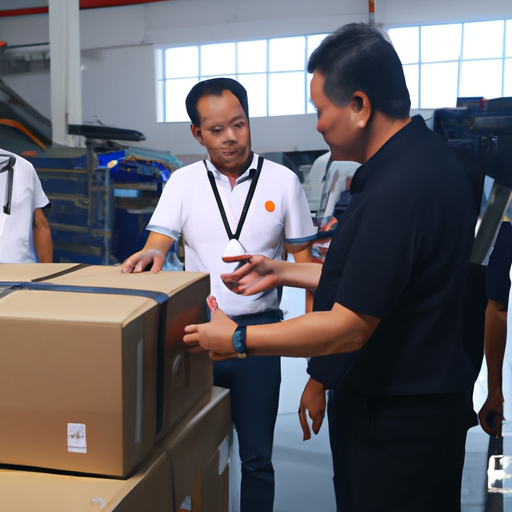Module product training is a training activity conducted by enterprises to improve employees' professional skills and knowledge. When conducting module product training, it is important to pay attention to some key points to ensure the smooth progress of the training and achieve good results. Here are some requirements for module product training:

2. Develop a training plan: Based on the training objectives and needs, develop a detailed training plan. The training plan should include arrangements for training content, training time, training location, training methods, etc. The training plan should allocate time and resources reasonably to ensure the smooth progress of the training.
3. Choose the appropriate training method: Module product training can be conducted in various ways, such as face-to-face training, online training, hands-on training, etc. Depending on the training content and objectives, choose the appropriate training method. Different training methods have different advantages and disadvantages, so choose according to the actual situation.
4. Ensure training instructor resources: Trainers are the core of training, and their professional level and teaching ability directly affect the training effectiveness. Ensure that trainers have rich practical experience and professional knowledge to effectively impart knowledge and skills. Trainers should also have good communication skills and teamwork spirit to establish good interactive relationships with employees.
5. Provide training resources and tools: To improve training effectiveness, necessary training resources and tools need to be provided. This includes training materials, teaching equipment, experimental equipment, etc. Training resources and tools should be adequately prepared to ensure the smooth progress of training and the learning effectiveness of employees.
6. Conduct training evaluation: After the training, an evaluation of the training effectiveness should be conducted. Through evaluation, the actual effect of the training and the learning situation of employees can be understood, problems can be identified and improved in a timely manner. Training evaluation can be conducted through questionnaire surveys, exam assessments, practical exercises, etc., to comprehensively evaluate the training effectiveness.
7. Continuous tracking and improvement: Module product training is a continuous improvement process. It is necessary to continuously track the training effectiveness and employees' learning situation, and adjust the training plan and content in a timely manner. Through continuous improvement, the training effectiveness and employees' comprehensive qualities can be enhanced, providing strong support for the development of the enterprise.
In conclusion, module product training is an important means for enterprises to improve employees' professional skills and knowledge. Attention should be paid to requirements such as training objectives, developing training plans, choosing the appropriate training method, ensuring training instructor resources, providing training resources and tools, conducting training evaluation, continuous tracking and improvement, etc., to ensure the smooth progress of training and achieve good results. Only by continuously improving employees' professional qualities and comprehensive abilities can enterprises stand undefeated in the fierce market competition.
Module product training is a training activity conducted by enterprises to improve employees' professional skills and knowledge. When conducting module product training, it is important to pay attention to some key points to ensure the smooth progress of the training and achieve good results. Here are some requirements for module product training:

2. Develop a training plan: Based on the training objectives and needs, develop a detailed training plan. The training plan should include arrangements for training content, training time, training location, training methods, etc. The training plan should allocate time and resources reasonably to ensure the smooth progress of the training.
3. Choose the appropriate training method: Module product training can be conducted in various ways, such as face-to-face training, online training, hands-on training, etc. Depending on the training content and objectives, choose the appropriate training method. Different training methods have different advantages and disadvantages, so choose according to the actual situation.
4. Ensure training instructor resources: Trainers are the core of training, and their professional level and teaching ability directly affect the training effectiveness. Ensure that trainers have rich practical experience and professional knowledge to effectively impart knowledge and skills. Trainers should also have good communication skills and teamwork spirit to establish good interactive relationships with employees.
5. Provide training resources and tools: To improve training effectiveness, necessary training resources and tools need to be provided. This includes training materials, teaching equipment, experimental equipment, etc. Training resources and tools should be adequately prepared to ensure the smooth progress of training and the learning effectiveness of employees.
6. Conduct training evaluation: After the training, an evaluation of the training effectiveness should be conducted. Through evaluation, the actual effect of the training and the learning situation of employees can be understood, problems can be identified and improved in a timely manner. Training evaluation can be conducted through questionnaire surveys, exam assessments, practical exercises, etc., to comprehensively evaluate the training effectiveness.
7. Continuous tracking and improvement: Module product training is a continuous improvement process. It is necessary to continuously track the training effectiveness and employees' learning situation, and adjust the training plan and content in a timely manner. Through continuous improvement, the training effectiveness and employees' comprehensive qualities can be enhanced, providing strong support for the development of the enterprise.
In conclusion, module product training is an important means for enterprises to improve employees' professional skills and knowledge. Attention should be paid to requirements such as training objectives, developing training plans, choosing the appropriate training method, ensuring training instructor resources, providing training resources and tools, conducting training evaluation, continuous tracking and improvement, etc., to ensure the smooth progress of training and achieve good results. Only by continuously improving employees' professional qualities and comprehensive abilities can enterprises stand undefeated in the fierce market competition.





